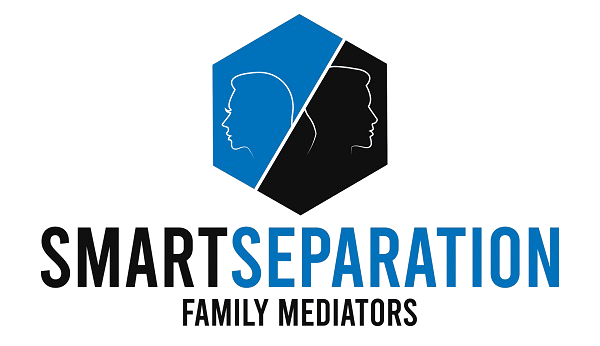Step 1 – Initial Consultation with a Toronto Family Mediator
When couples in Toronto decide to resolve their separation or divorce-related issues outside the courtroom, family mediation is often the first step. The process begins with an initial consultation—an essential stage that sets the foundation for respectful and constructive dialogue. This session allows the Toronto family mediator to determine if mediation is appropriate and to guide both parties through the structure of the process.
What Happens During the Intake Session?
The initial consultation, also known as an intake session, is usually held individually with each party. This allows the mediator to understand each person’s concerns, communication style, and desired outcomes without the pressure of the other party being present. The mediator gathers relevant background information, such as the history of the relationship, the nature of disputes (e.g., parenting, support, property division), and any existing court orders or agreements.
Confidentiality Agreement and Mediation Ground Rules
Before any mediation sessions begin, both parties are asked to sign a confidentiality agreement. This ensures that discussions within the mediation process cannot be used later in court, promoting open and honest communication. The mediator will also outline the ground rules—these may include respectful dialogue, no interrupting, and a commitment to attend sessions in good faith.
Screening for Domestic Violence or Power Imbalance
In Ontario, accredited family mediators are required to conduct a thorough screening for domestic violence, coercion, or significant power imbalances.
In Toronto, many mediators are trained to adapt the process to address safety concerns—whether by conducting sessions separately, using secure video conferencing, or referring clients to appropriate legal or community supports.
Step 2 – Identifying the Issues to Be Resolved
Once the initial consultation is complete and both parties have agreed to proceed, the next step in working with a Toronto family mediator involves clearly identifying the issues that need to be addressed.
Common Topics Discussed in Family Mediation
In Ontario, family mediation can cover a wide range of separation and divorce-related issues. The most common topics include:
- Parenting Plans: Establishing decision-making responsibility (formerly known as custody), parenting time (access), holiday schedules, and guidelines for communication between parents.
- Division of Property and Assets: How to fairly divide matrimonial property, including the family home, bank accounts, vehicles, pensions, and debts.
- Spousal Support: Determining entitlement, the amount and duration of support, and how it may be reviewed or adjusted in the future.
Setting Goals and Priorities for the Mediation Sessions
A skilled Toronto family mediator will help each party articulate their goals and concerns. For example, one party may prioritize stability for the children, while the other may be more focused on financial fairness. Mediation works best when both individuals understand what matters most to them—and what outcomes they’re willing to negotiate on.
By clarifying these priorities early in the process, the mediator can structure sessions to focus on the most pressing issues and build momentum by resolving smaller matters first.
Importance of Full Financial Disclosure in Ontario
Under Ontario family law, full and honest financial disclosure is not optional—it’s a legal requirement. Each party must provide complete and up-to-date information about their income, assets, debts, and liabilities. This typically involves sharing tax returns, bank statements, property appraisals, and pension valuations.
Without proper disclosure, any agreements reached could later be challenged or set aside in court. A Toronto family mediator will ensure that both parties understand their obligation to disclose and may pause the process if key financial information is missing.
Step 3 – Scheduling and Preparing for Mediation Sessions
Once the key issues have been identified, the next step in the family mediation process involves scheduling and preparing for the actual mediation sessions. This stage is about creating a structure that supports open discussion and progress. A well-prepared client is more likely to feel confident and focused, which leads to more productive conversations. Your Toronto family mediator will guide you through what to expect and how to get ready.
How Many Sessions to Expect and How Long Each Typically Lasts?
The number of mediation sessions required varies based on the complexity of the issues and the level of cooperation between parties. On average:
- Simple cases (e.g., no children or minimal assets) may take 1–2 sessions.
- Moderate to complex cases (involving parenting plans, spousal support, or property division) typically require 3–5 sessions.
Each session usually lasts 1.5 to 2 hours, although longer sessions may be scheduled if both parties are willing and available. Sessions may be held in person or virtually, depending on the mediator’s practice and the clients’ preferences.
Documents and Information to Bring
To ensure meaningful discussions, each party will be asked to bring specific documents, including:
- A completed Financial Statement (Form 13 or 13.1) as required under Ontario’s Family Law Rules
- Income documentation, such as recent pay stubs and three years of tax returns
- Statements for bank accounts, RRSPs, pensions, credit cards, and loans
- Property appraisals or mortgage documents for real estate
- Parenting calendars or school schedules (if children are involved)
Tips from a Toronto Family Mediator on Preparing Mentally and Emotionally
Mediation isn’t just about paperwork—it also requires emotional preparation. Here are some insights mediators often share with their clients:
- Be open to compromise. Mediation is about finding solutions that both parties can live with, not “winning” every point.
- Manage expectations. Not all issues are resolved immediately. Progress may be gradual, and that’s normal.
- Stay respectful and calm. Emotional control helps maintain a productive atmosphere, even during difficult conversations.
- Practice self-care. Make time for rest, exercise, or talking with supportive friends or professionals in between sessions.
Step 4 – Guided Negotiation and Problem-Solving
This stage is the heart of the family mediation process. With the help of a Toronto family mediator, both parties begin structured discussions to resolve the issues identified earlier. The mediator does not make decisions for you but facilitates negotiation by guiding conversations, keeping things on track, and helping both parties explore workable solutions. The goal is to reach fair and sustainable agreements that reflect each family’s unique needs.
How the Toronto Family Mediator Facilitates Discussion?
Experienced Toronto family mediators apply a range of techniques to maintain civility and progress, such as:
- Ground rules: Reinforcing respectful communication and discouraging blame or personal attacks
- Neutral language: Reframing emotionally charged statements into more neutral terms
- Time limits: Ensuring each party has equal time to speak without interruptions
- Caucusing: Holding private, separate meetings if tensions rise or safety concerns arise
Exploring Options and Finding Mutual Ground
Rather than focusing solely on positions (e.g., “I want full custody”), the mediator encourages each party to express their underlying interests (e.g., “I want to be involved in our child’s daily life”).
A Toronto family mediator may suggest options the parties hadn’t considered—such as alternating holiday schedules or lump-sum support payments—while encouraging flexibility and collaboration. Mediators often use “what if” scenarios to help each party imagine practical compromises.
How Impasses Are Addressed Without Escalating Conflict?
Even in cooperative cases, disagreements happen. When negotiations stall, mediators use de-escalation techniques and structured problem-solving tools, such as:
- Reframing the issue to uncover hidden concerns
- Identifying smaller agreements that can be reached first
- Exploring third-party input, like child specialists or financial professionals
- Shuttle mediation (in separate rooms or breakout sessions) when direct interaction becomes too heated
Rather than forcing agreement, the mediator helps both parties explore paths forward while maintaining safety and mutual respect.
Step 5 – Drafting the Separation Agreement
Once both parties have successfully negotiated their issues with the help of a Toronto family mediator, the next step is to formally document the terms of the agreement. This is a critical phase in the family mediation process, as a properly drafted separation agreement provides legal clarity, reduces the risk of future conflict, and outlines each party’s rights and responsibilities.
What a Separation Agreement Includes in Ontario?
A comprehensive agreement typically includes:
- Parenting arrangements: Decision-making responsibilities, parenting time, and holiday schedules
- Child support: Based on the Federal Child Support Guidelines, including extra expenses (Section 7)
- Spousal support: Entitlement, amount, duration, and review provisions
- Division of property and debts: Equalization of Net Family Property, treatment of the matrimonial home, and responsibility for shared liabilities
- Life insurance, pensions, and benefits: To secure support or divide long-term assets
- Dispute resolution clause: Outlining how future disagreements will be handled
Each agreement is tailored to the couple’s unique circumstances and must comply with Ontario’s Family Law Act.
Role of the Mediator in Drafting vs. Legal Review
A Toronto family mediator can prepare a Memorandum of Understanding (MOU) or a draft separation agreement that outlines the terms both parties agreed to during mediation. However, it’s important to note:
- Mediators do not provide legal advice
- Some mediators are also lawyers, but if they act as a neutral, they cannot represent either party
The draft is often sent to each party’s lawyer for review, ensuring that the final document is clear, fair, and legally enforceable.
Why Independent Legal Advice Is Strongly Recommended Before Signing
In Ontario, courts place high importance on the fairness and validity of separation agreements. To protect both parties and ensure the agreement holds up in court, independent legal advice (ILA) is strongly encouraged—and often essential. This involves:
- Each party reviewing the agreement with their own lawyer
- Ensuring full financial disclosure was provided
- Confirming that no coercion or undue pressure influenced the agreement
- Helping each party understand their legal rights and obligations
Without ILA, there’s a greater risk that a court could later set aside the agreement due to unfairness or lack of informed consent.
Step 6 – Finalizing and Enforcing the Agreement
After reaching a consensus and drafting the separation agreement, the final step in the family mediation process is to ensure the agreement becomes legally binding and enforceable. A Toronto family mediator can guide couples to this stage, but it is up to the parties—with legal support—to finalize the document and determine how it will be treated under Ontario law.
Making Your Agreement Legally Binding
In Ontario, a separation agreement becomes legally binding when:
- It is in writing
- Both parties sign the agreement voluntarily
- The agreement is witnessed and dated
- Both parties have ideally received independent legal advice
Once these elements are satisfied, the contract can be legally enforced like any other binding agreement.
Options: Filing with the Court or Keeping It as a Private Contract
Couples have two main options when finalizing their separation agreement:
- Keep it as a private contract
- The majority of separation agreements remain private documents, upheld through contract law.
- These agreements can be enforced in court if necessary, especially for financial matters or support payments.
- File with the Ontario family court
- If the parties want the terms (e.g., child or spousal support) to be enforced more easily, they may file the agreement with the court.
- This is done through Form 26B (Affidavit for Filing Domestic Contract), allowing the court to treat the agreement like a court order.
Enforceability of a Signed Separation Agreement in Ontario
A properly executed separation agreement is enforceable in Ontario courts, provided it meets legal standards. However, a court may set aside an agreement if:
- One party failed to make full and honest financial disclosure
- There was duress, coercion, or undue influence during signing
- The terms are unconscionable or grossly unfair
- A significant legal mistake was made by one or both parties
This is why independent legal advice and full transparency are essential parts of the mediation process.
When and How to Update the Agreement if Circumstances Change?
Life changes—such as a new job, relocation, remarriage, or changes in the children’s needs—may make parts of the agreement outdated. In Ontario, parties can:
- Negotiate an Amending Agreement (must also be in writing, signed, witnessed, and ideally reviewed by lawyers)
- Create a new separation agreement that replaces the old one
- Use mediation again to resolve new disputes and revise terms
If one party refuses to update the agreement, the other may apply to the court to vary specific terms, especially in areas like child or spousal support.
As an experienced family and divorce mediator in Toronto, I often write blogs to provide insights, tips, and resources on family mediation and divorce in Ontario. Follow my blog to stay informed and empowered during challenging times.



